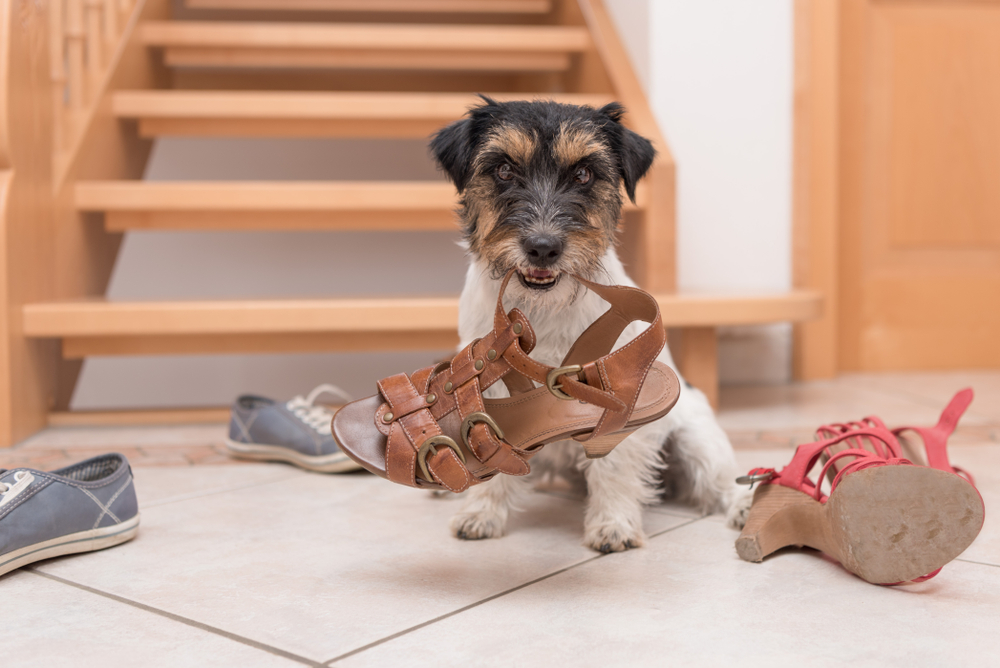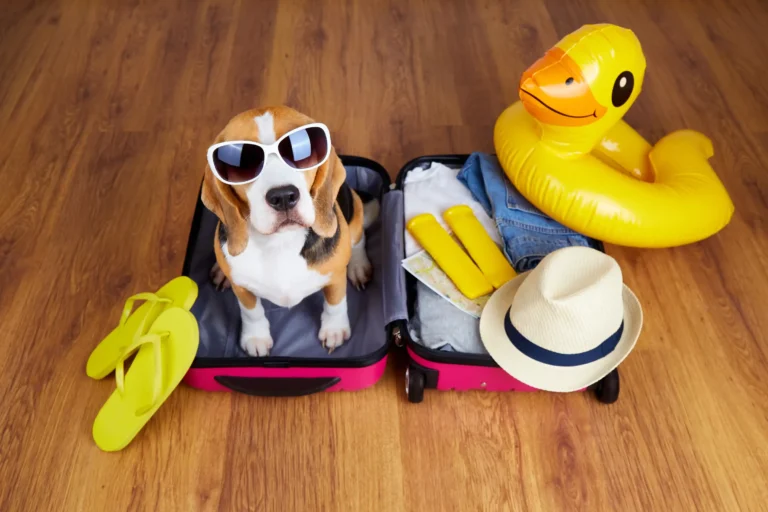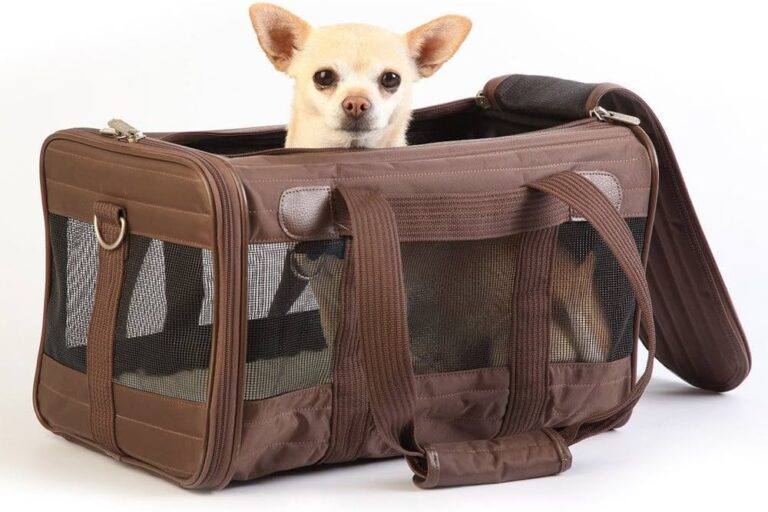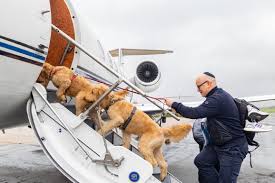Introducing “Smooth Sailing: Mastering the Art of Training Your Small Dog for Stress-Free Car Rides!” A comprehensive guide tailored to all pet parents who are eager to conquer their furry friend’s fear of car journeys. The upcoming paragraphs will unfold a treasure trove of valuable insights, tips, and techniques that will take the stress out of car rides for your small-sized canine companions. 🐾🚗
In the first section, we will dive deep into understanding the reasons behind your pooch’s apprehension of car trips. Unveiling the psychology of canine anxiety, it aims to help you comprehend the stress triggers and fear factors that lie beneath the surface. It’s essential to understand these causes before attempting to address the issue. So, get ready to unravel the mystery that has been causing your furry friend discomfort during car rides. 🐶💭
Following this, the focus will shift to practical, hands-on training techniques. A step-by-step guide, it will guide you through the process of acclimating your small dog to car rides. This section will be filled with expert advice and proven training methods to help your furry friend associate car journeys with positive experiences. 🐕🦺🚘
Lastly, the final part of this guide will spotlight on preventative measures. It will introduce you to an array of useful products and tools designed to make car journeys more comfortable and less stressful for your dog. This comprehensive guide promises to equip you with all the knowledge needed to turn car rides into a fun-filled experience for your small dog. So, buckle up and prepare for a smooth ride ahead! 🐩🎓🚗
Remember, a stress-free car ride is not just about the destination, but also about the journey. So, let’s embark on this path of creating a positive travel experience for your little four-legged family member!
Understanding the Concept of Stress in Dogs During Car Rides
The first step to mastering the art of training your small dog for stress-free car rides is to understand the concept of stress in dogs. Many factors can contribute to a dog’s stress during car rides, including fear of the unfamiliar environment, car sickness, or previous negative experiences.
Just like humans, dogs have their own personalities and distinct reactions to stressful situations. Some dogs are naturally more adaptable, while others are more sensitive and prone to anxiety. It is essential to recognize and understand your dog’s unique stress signals to effectively address their needs during car travel.
Common signs of stress in dogs include excessive panting, drooling, whining, trembling, barking, restlessness, or attempting to escape. Some dogs may even refuse to get into the car or attempt to hide when a car ride is imminent. Recognizing these signs early can help you intervene before the anxiety escalates.
Additionally, physiological symptoms like vomiting or diarrhea can occur if your dog’s stress levels are very high. Being attuned to these symptoms will allow you to respond quickly and compassionately, ensuring your dog’s emotional well-being.
Identifying Your Dog’s Stress Triggers
Identifying your dog’s specific stress triggers is crucial for creating a targeted training plan. Not all dogs are stressed by the same stimuli, and pinpointing what unsettles your dog will enable you to craft a more personalized and effective strategy.
Observation is key. Pay close attention to your dog’s behavior before, during, and after car rides. Note the circumstances that coincide with visible stress signs. Does your dog become anxious as soon as they see the car? Or does the anxiety only manifest once the engine starts? Maybe it is the sensation of movement, or the sights and sounds outside the window.
Some common triggers include:
Loud engine noises
The vibrations and movement of the car
Being confined in a crate or seat
Motion sickness sensations
Negative associations with destinations (e.g., trips to the vet)
Once you have a clear understanding of what triggers your dog’s anxiety, you can take proactive steps to gradually desensitize them and make car rides a more pleasant experience.
Implementing Training Techniques for Stress-Free Car Rides
After identifying your dog’s stress triggers, it is time to implement effective training techniques designed to reshape their emotional response to car rides.
Positive Association
Building positive associations with car travel is one of the most effective ways to reduce stress and anxiety. The goal is to make the car a place where good things happen.
Start by introducing your dog to the car in a non-threatening way. Allow them to explore the car while it is parked, without any pressure to go on a ride. Reward calm behavior with high-value treats, praise, and petting.
Progressively increase the interaction by asking your dog to hop into the car, sit calmly, and then exit, all while receiving rewards. Once your dog appears comfortable being in the stationary car, you can move to starting the engine without driving anywhere, continuing to offer rewards for calm behavior.
Eventually, begin taking very short drives around the block, gradually extending the length of the trips as your dog becomes more confident. Continue to associate each experience with positivity to reinforce the idea that car rides are enjoyable.
Gradual Exposure
Gradual exposure, also known as desensitization, is essential when dealing with severe car anxiety. The key is to proceed at a pace your dog is comfortable with, without pushing them into situations that could reinforce their fear.
Start by simply spending time near the car without even getting inside. Reward your dog for being calm around the vehicle. Next, move to having them sit inside with the doors open, progressing to sitting inside with the doors closed, and finally to short rides.
Always monitor your dog’s body language for signs of stress. If your dog appears overwhelmed at any stage, back up to a previous step where they were more comfortable before attempting to progress again.
Patience and consistency are crucial throughout this process. While it may be tempting to rush, gradual, positive exposure builds long-term comfort and confidence.
Creating a Comfortable Environment for Your Dog
Creating a car environment where your dog feels safe and relaxed can make a huge difference in their comfort level during rides.
Use of Comfort Items
Bringing along familiar items, such as a favorite blanket, toy, or bed, can provide a sense of security. These objects carry familiar scents and offer comfort, helping your dog feel more at home in the car.
Some pet owners find that pheromone sprays designed to calm dogs can also be beneficial. These sprays mimic calming natural scents and can be applied to your dog’s bedding or seat before a ride.
Proper Restraint
Ensuring your dog is safely restrained during the ride is critical for both their safety and their emotional comfort. A properly fitted car harness, travel crate, or dog booster seat can prevent your dog from being jostled around, which may otherwise increase anxiety.
When using a crate, choose one that is well-ventilated and large enough for your dog to stand, turn around, and lie down comfortably. Covering the crate with a lightweight blanket can reduce visual stimulation and create a cozy den-like environment.
Remember that free-roaming in the car is dangerous for your dog and distracting for the driver. A secure setup ensures everyone’s safety.
Maintaining a Calm Atmosphere
Keep the volume of music or radio low and avoid sudden loud noises that might startle your dog. Drive smoothly, avoiding abrupt starts, stops, and sharp turns whenever possible.
Speaking to your dog in a calm, reassuring voice can also help soothe them during the journey. Your own demeanor is important; if you remain relaxed and positive, your dog is more likely to mirror your behavior.
Creating a Comfortable Environment for Your Dog
Along with the training techniques, creating a comfortable environment for your dog in the car can greatly help reduce their stress levels.
Use of Comfort Items
Comfort items such as your dog’s favorite blanket or toy can help create a familiar and comforting environment in the car. This can help your dog feel more at home and less anxious during car rides.
Proper Restraint
Proper restraint is also essential for your dog’s comfort and safety during car rides. A well-fitted harness or car seat can help your dog feel more secure and less anxious. Moreover, it can also protect your dog from potential injuries during sudden brakes or accidents.
Dealing with Motion Sickness
Motion sickness is a common issue in dogs during car rides, and it can greatly contribute to their stress levels.:strip_icc()/cure-puppy-car-sickness-2804799-hero-540f3dd25a7e4df78ccabcf1e3d47877.jpg)
Preventing Motion Sickness
There are several ways to prevent motion sickness in dogs, including feeding your dog a light meal before the ride, allowing them to look out the window, or using motion sickness medication prescribed by your vet.
Managing Motion Sickness Symptoms
If your dog does get motion sick, it’s important to know how to manage the symptoms. This can include stopping the car for a while, providing fresh air, or simply comforting your dog.
Addressing Behavioral Issues
In some cases, a dog’s stress during car rides may stem from behavioral issues, such as separation anxiety or fear of the unknown.
Seeking Professional Help
In such cases, it may be highly beneficial to seek assistance from a professional dog trainer or a certified canine behaviorist. These experts possess the knowledge and experience necessary to accurately assess your dog’s specific triggers and anxiety responses. They can create a personalized training plan that addresses the root causes of your dog’s stress, rather than just managing the symptoms. Working with a professional also allows you to learn proper techniques and strategies that you might not have considered on your own. In many instances, early intervention with a qualified trainer can prevent mild anxiety from developing into more severe behavioral problems. Investing in professional help not only benefits your dog’s emotional well-being but also strengthens the bond you share, making every future journey more enjoyable and stress-free for both of you.
Behavioral Modification Techniques
Behavioral modification techniques, such as desensitization and counter-conditioning, can also be used to address these issues. These techniques involve gradually exposing your dog to the fear-inducing situation and replacing the fear response with a more desirable behavior.
In conclusion, mastering the art of training your small dog for stress-free car rides requires patience, understanding, and consistent efforts. But with the right approach and techniques, it is certainly an achievable goal.
- Identify your dog’s stress triggers
- Implement positive association and gradual exposure techniques
- Create a comfortable environment in the car
- Deal with motion sickness effectively
- Address behavioral issues with professional help and behavioral modification techniques
Conclusion
In summary, mastering the art of training your small dog for stress-free car rides is not only possible but crucial for creating enjoyable journeys together. Proper training, understanding your dog’s specific needs, and maintaining a calm, positive environment can all contribute to transforming stressful trips into fun and relaxed experiences. A well-prepared pet parent recognizes that every dog is an individual, and while one technique may work wonders for one dog, it might not be effective for another. Flexibility, patience, and consistency are the keys to finding the right approach for your furry friend.
Equipping yourself with the right tools, such as a comfortable and secure dog car seat, a familiar blanket, and favorite toys, can significantly ease your dog’s anxiety. Additionally, ensuring that your pet is properly restrained for safety reasons helps create a secure and stable environment during the ride.
The journey may present its challenges, especially in the beginning stages of training, but the rewards are truly priceless. Seeing your dog relaxed, happy, and even excited for a car ride strengthens the bond you share and opens up a world of new adventures together.
Remember, our dogs are not just companions; they are beloved members of our families. Their comfort, safety, and happiness should always remain a top priority. With dedication, love, and perseverance, you can make every car ride a stress-free and joyful experience for your small dog. After all, it is not just about reaching the destination — it is about cherishing the journey you take together. 🐾🚗💖



